
As I was preparing the details for the exciting prize I am offering for this year's Menu of Hope campaign, I was thinking of how often the best laid plans do indeed to to seed. Not that this is always a bad thing, you understand. When I started this blog in April, earlier this year, I thought I knew how it would turn out. It went something like this: I'd set it up on a rainy afternoon as a bit of an experiment, type a few posts out about food and wine, probably lose interest/run out of things to post about/find no time to keep it up and then leave it out there to drown quietly in the blogosphere. It never occurred to me anyone would actually read it. Things certainly turned out differently - how could I possibly lose interest in something that connects me with so many other like-minded food enthusiasts? Too few things to post about? Try too many - I always seem to have a backlog of things I want to share. No time? Hmmm. This is closer to the mark. But my blog is now such a passion that I manage to make time for it (to the detriment of the filing/housework/ironing).
Perhaps the main thing I didn't plan on though, was the theme. I knew I wanted to write about food. But I also planned to write a great deal more about wine. Wine, after all, is in many ways more my area of expertise. I work in the wine business. I host wine tastings for a living. Wine is a huge passion. But as the months have passed, I have posted remarkably little about the fermented grape. A few wine suggestions to match recipes, here and there, but little else. I'm still not sure why this is. I suppose that the obvious reason for this is that I am involved with wine in some way or another for every hour of my working day. Whilst post-writing is usually accompanied by a glass of something-or-other, I maybe need to focus on something else once I get home.
Having said this, food and wine are inextricably linked. For me, one is simply inferior without the other (there are the odd exceptions... a refreshing German riesling goes down a treat on a summer's day with nothing to accompany other than the gentle hum of someone else mowing the lawn whilst I relax in a deckchair and I'm not one to refuse a glass of decent Champagne just on the basis that there are no smoked salmon blinis to accompany it). I give much thought to what wines to serve with the foods I serve. At this time of year, I am often called up by panicked friends for advice on what to serve over the festive period. What goes best with the turkey? Tawny or Ruby Port with the Stilton? Will any wine stand up to the richness of the Christmas pudding? Will last year's Sherry be good to drink this year (NO!)?
With this in mind, here are my hints and tips on wines for Christmas drinking. I hope you enjoy reading them, bearing in mind the following food and wine matching guidelines which I always stick to:
1. There are NO rules when it comes to food and wine matching. Red wines can and DO go with white meats and fish just as white wines can and DO go with cheese (often better than reds).
2. Taste is entirely subjective. Just because Sauternes is generally accepted as the perfect match for Roquefort cheese does not mean that you have to like it!
3. The key consideration when matching food and wine is... BALANCE. Take into consideration the 'weight' and intensity of your food and wine and try to balance them. Weighty food with weighty wines. Light food with light wines.
Starters
 It is hard to generalise about festive starters - there is no one traditional starter at Christmas. So a few general suggestions -
It is hard to generalise about festive starters - there is no one traditional starter at Christmas. So a few general suggestions -
Smoked salmon (and other festive fishy things) - in our household, smoked salmon is eaten twice on Christmas Day. Firstly, piled onto brown bread with lemon and pepper to nibble on whilst we open our presents and then late in the evening, if we have space after lunch, sometimes accompanied by a little scrambled egg.
I think there are three schools of thought when choosing smoked-salmon friendly wines...
1) Crisp and refreshing (to cut through the oiliness and act like a squeeze of lemon). Brut (dry) Champagne works well, especially if the salmon is in canapé form and accompanied by a crusty bottom, blini or creamy base. Champagne is also great with caviar. Chablis (or crisp, unoaked chardonnay from the New World) is also a good choice, as is sauvignon blanc from the Loire Valley (Sancerre, Pouilly-Fumé). I'd avoid the more tropical, overtly gooseberry-flavoured New Zealand sauvignons though. Dry, minerally riesling can also be a good choice. These wines all work very well with shellfish too.
2) Fat, oily and aromatic. Sounds faintly unpleasant, doesn't it? But the idea here is to match the oiliness of the fish with something similarly textured and the smokiness with an aromatic flavour. Exotically-scented, dry gewurztraminer from Alsace makes an unusual but highly successful match.
3) Dry Fino and Manzanilla Sherries. Served nice and cold and, most importantly, fresh. Treat as you would any other dry white wine - keep in the fridge for no more than a few days - and enjoy as the ultimate aperitif. Brilliant with olives and salted almonds too. And tremendously good value.
Pâtés and foie gras
Rich pâtés work brilliantly with rich, sweet wines. Honestly. I promise. Foie gras is traditionally eaten at Christmas in France and is usually served with Sauternes, Bordeaux's famous sweet wines made from semillon and sauvignon grapes that have been affected by 'noble rot', a fungus that feeds on the grapes, sucking moisture from them and thereby concentrating the sugars, flavours and acids. Sounds vile. Tastes divine! Ring the changes though and try other sweet wines - late-harvest gewurztraminer or pinot gris is good. If you don't want to overwhelm the rest of the meal by starting on something so sweet, stick to a drier Alsace pinot gris. With meaty pâtés, you could go with pinot noir or perhaps a good Beaujolais.
The Main Event
 Turkey
TurkeyThis most festive of birds is a fairly forgiving creature and will go well with almost anything you care to throw at it. Some insist on white (in which case opt for a good chardonnay - I'd favour Burgundy but you could equally go for Australian, New Zealand or Californian example). I would, however, ask you to consider the pictures above and below for a moment...
 Notice the difference? Yes. The top one shows a turkey. Plain. Unadulterated (save a little bacon). The bottom shows an obscenely large plate of food featuring turkey, chipolatas, kidneys wrapped in bacon, two types of stuffing, parsnips, roast potatoes, bread sauce, Brussels sprouts, giblet gravy, roasted carrots, cranberry sauce (and peas, but I'd prefer not to dwell on that dirty little habit of mine). What started out as a fairly lightly flavoured meal has now become anything but. Lots of rich flavours there. Your chosen wine needs to stand up to them all!
Notice the difference? Yes. The top one shows a turkey. Plain. Unadulterated (save a little bacon). The bottom shows an obscenely large plate of food featuring turkey, chipolatas, kidneys wrapped in bacon, two types of stuffing, parsnips, roast potatoes, bread sauce, Brussels sprouts, giblet gravy, roasted carrots, cranberry sauce (and peas, but I'd prefer not to dwell on that dirty little habit of mine). What started out as a fairly lightly flavoured meal has now become anything but. Lots of rich flavours there. Your chosen wine needs to stand up to them all!
I favour red with the festive feast, I have to say. Bordeaux is the usual choice for my Christmas but pinot noir would be excellent with the turkey too, whether from Burgundy or New Zealand. I know some who insist on something heavier (an Australian shiraz, for example) but I'm not totally convinced. I like something with a bit of old-world elegance. Having said this, I recently tried a very good Californian Zinfandel with turkey, chestnut and cranberry pies at a food and wine matching session and was duly impressed. The flavours were superb with the cranberry element and held up well against the sprouts. Sprouts can be fiendish - their slight bitter flavour can make most reds taste slightly metallic. They work best with full-bodied, high alcohol reds. grenache and Zinfandel are both good candidates here.
Other festive birds and animals
Goose is great for some with gewurztraminer. I like it also with pinot noir. And I like pinot with most game birds- pheasant, partridge, grouse. Stick with cool climate pinot with a nice seam of acidity to cut through the goose-fat though.
Roast beef is another choice favoured by some - pick any favoured red and you'll probably be fine. Roast beef is my favourite way to show off any really good bottle of red that I have.
Leftovers
Boxing Day - a groaning table of cold turkey, ham, salads, cheeses and condiments requires a reasonably undemanding yet fruity wine to take on this smorgasbord of flavours. I'd opt for a good Beaujolais (probably one of the 'crus' such as Fleurie, Morgon or Brouilly). The lowish tannins will handle the cheeseboard up to a point (see earlier post on cheese and wine matching) and the lovely bright summer fruit and cherry flavours will act like a fruity chutney to the cold meats.
Turkey curry - spicing up the leftovers (I threw mine into a Thai green affair last year) screams out for the aromatic whites of Alsace. Again, gewurztraminer would be my choice of varietal here. An exuberant NZ sauvignon blanc could work too. As could a New World riesling, just a notch off-dry.
All things sweet and wonderful...
 I have one word for you here: Madeira. Actually, I have a couple more for you too: Sherry and Port. I urge you to race out and buy a bottle of Malmsey Madeira (Henriques and Henriques do lovely 50cl bottles if you don't trust me 100%). Light the fire. Draw the curtains. Sit comfortably and then pour yourself a glass of this deeply coloured liquid. Stick your nose into the glass and breathe in. Mmmmm. What does it smell of? Christmas.
I have one word for you here: Madeira. Actually, I have a couple more for you too: Sherry and Port. I urge you to race out and buy a bottle of Malmsey Madeira (Henriques and Henriques do lovely 50cl bottles if you don't trust me 100%). Light the fire. Draw the curtains. Sit comfortably and then pour yourself a glass of this deeply coloured liquid. Stick your nose into the glass and breathe in. Mmmmm. What does it smell of? Christmas.
Yes, this divine stuff taste of figs and walnuts and caramel and coffee all at once. Gorgeously sweet but with firm acidity and backbone, this is the ultimate Christmas wine. Am I right? Or am I right? Gorgeous on its own with your feet up by the fire, this is also perfect with a slice of Christmas cake at tea time, with a mince pie, with Cheddar and Stilton and even with the similarly-flavoured Christmas pudding. It will even cope with the box of handmade truffles that are sitting on the sideboard - really it will.
If you feel the need to venture beyond the confines of Madeira, then do try some of the sweeter styles of Sherry. Sweet and nutty Oloroso sherries are marvellous with cheeses. Pedro Ximénez (PX for short) is a treacley, unctuous dream poured over vanilla ice cream.
Other Christmas pudding-friendly wines include wines made from the Muscat grape variety. Thick and sticky Rutherglen Muscat from Australia is oft described as 'Liquid Christmas Pudding'. If you prefer something less rich, then some insist that sparkling Moscato d'Asti works a dream. I haven't tried it, but am prepared to give it the benefit of the doubt!
Whatever wines you choose this Christmas, I hope you have a very merry time with them.
 P.S. Do remember to check back on the 10th for details of the wonderful wine-related prize I shall be offering for this year's Menu of Hope raffle, plus details of where to find out about the other fabulous prizes!
P.S. Do remember to check back on the 10th for details of the wonderful wine-related prize I shall be offering for this year's Menu of Hope raffle, plus details of where to find out about the other fabulous prizes!
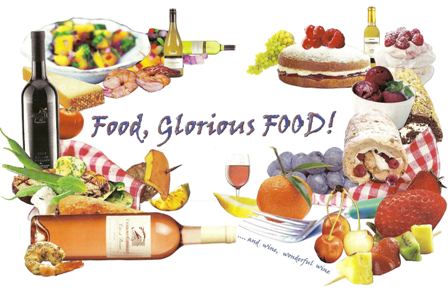



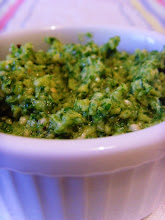
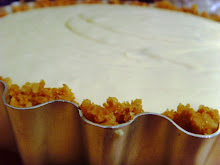
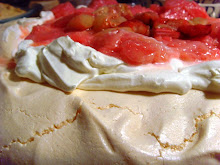
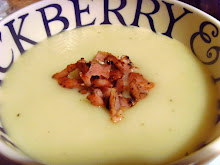










5 comments:
Great post! I'm bookmarking it right now. I know absolutely nothing about wine other than how to guzzle it in great quantities.
Too bad I don't drink anymore.......but is that your Christmas Cake I see? Looks fabulous!!!!!
Wendy - thanks - hope it might be useful! I'm fairly expert in guzzling it in great quantities too.
Lynn - It is indeed my Christmas cake. Am a bit worried as it is rather overcooked (despite taking it out of the oven AGES before Delia said). Am dousing it with soaking mixture though in the hope that it will be moist enough!
Antonia - has your blog already celebrated Christmas!!!
I don't actually drink wine any more but still find food and wine matching fascinating.
What an extremely interesting post.
Hi antonia,
I am also a novice when it comes to wine. Thank you so much for this information and what a great post :)
Rosie x
Post a Comment